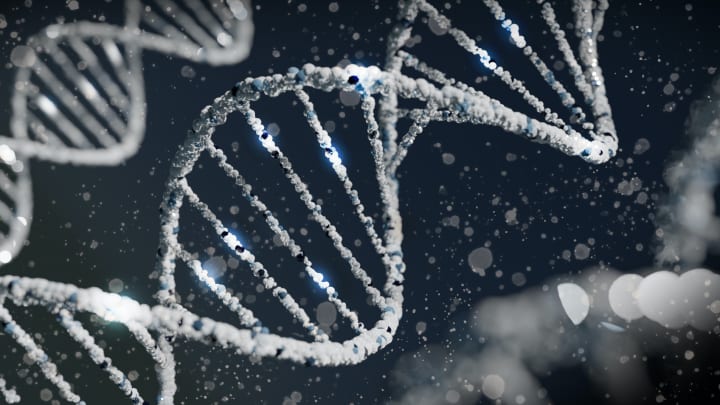
Since humans began domesticating animals and selectively breeding them, they have been participating in a rudimentary form of genetic modification. For thousands of years, humans have been altering various species of plants and animals. Today, many foods people take for granted, such as corn, bananas, and cucumbers, only exist in their current form as a direct result of human genetic intervention.
But what about more invasive interference? Science fiction is full of examples of why it might be better not to mess around with genetic modification. However, how far has science come with regards to genetically modifying people to make them super strong or creating animal-human hybrids?
The first genetically modified organism (GMO) came about as early as 1973, when biochemists Herbert Boyer and Stanley Cohen successfully transplanted DNA from one bacterium into another, permanently altering its genetic structure. As a direct result of this achievement, scientists were able to use a similar process in order to create a bacteria capable of producing human insulin in 1982.

It's not just the field of medicine that has benefited from GMOs. In 1987, research began on the Calgene Flavor Saver Tomato, which had its DNA sequence artificially altered in order to reduce the production of a particular protein, which in turn amended that they would stay firmer for longer, greatly increasing their shelf life. Five years later, these tomatoes would be approved for sale to members of the public.
After the approval of BT corn, a modified strain of corn that produces its own pesticides, in 1995, the agricultural industry has not looked back. Although life-saving bacteria and self-protecting crops are all very impressive, what advancements both actual and predicted could be made by altering the DNA of people or animals?
In the United States, at least, the presence of GMOs in the local food chain isn't really new. 90% of the corn, soybeans, and sugar beets on the market have undergone some form of DNA altering, be it to improve shelf life, pest resistance, or even just flavor. However, what a lot of people don't know is that a lot of the fish that is consumed in the United States has also undergone DNA modification.
Some farmed salmon produced within the U.S has undergone DNA modification so that as the fish ages, it does not stop producing growth hormone. This particular modification allows the fish to be sold as a full-size salmon after 18 months, rather than the traditional three years.
What if you could have a delicious burger, a tasty sausage, or a juicy steak without ever having to kill an animal at all? No, not talking about those so-called meat substitutes that don't really taste very much like meat, but real meat, the only difference being that this beef, pork, chicken, or lamb was not grown as part of an animal but in a lab using DNA modification techniques.
According to Professor Mark Post, Maastricht University, who cultured the world's first burger in 2013, the process is relatively straightforward. Cells are required from an animal by a harmless biopsy, then placed in a warm, sterile vessel with a solution called growth medium containing nutrients including salts, proteins, and carbohydrates. Every 24 hours or so, the cells would have doubled.

It would appear that we're a fairly long way from being able to go into a restaurant and order a perfect cow-free ribeye steak. The first cultivated meat products served up have been chicken nuggets or burgers and look as delicious as formless paste sounds. Cellular farming doesn't grow cuts of meat with bone and with skin or fat marbled through it like a succulent ribeye steak. Muscle cells require a scaffold to grow on, and creating a scaffold that mimics the complexity of real meat is still a challenge. Additionally, the cost of producing cultured meat is currently quite high, which limits its availability and makes it difficult to scale up production to meet the demands of a mass market. However, research and development in this area are ongoing, and there is hope that these challenges will be overcome in the future, leading to more realistic and affordable cultured meat products.
Overall, genetic modification has come a long way since humans first began selectively breeding plants and animals, with the creation of the first GMO in 1973 leading to a range of advancements in both medicine and agriculture. However, the field of genetically modifying people or animals for enhanced abilities remains largely in the realm of science fiction, with most GMOs focused on improving shelf life, pest resistance, or flavor. One promising area of development is lab-grown meat, which uses cellular farming techniques to produce meat without the need for animals. While currently limited in availability and lacking the complexity of real meat, ongoing research may eventually lead to more realistic and affordable cultured meat products.
About the Creator
Teng Huey
As a tech enthusiast with a passion for learning and exploring new topics, I write about the latest trends in technology, as well as a variety of other subjects. From science to culture and everything in between.






Comments
There are no comments for this story
Be the first to respond and start the conversation.